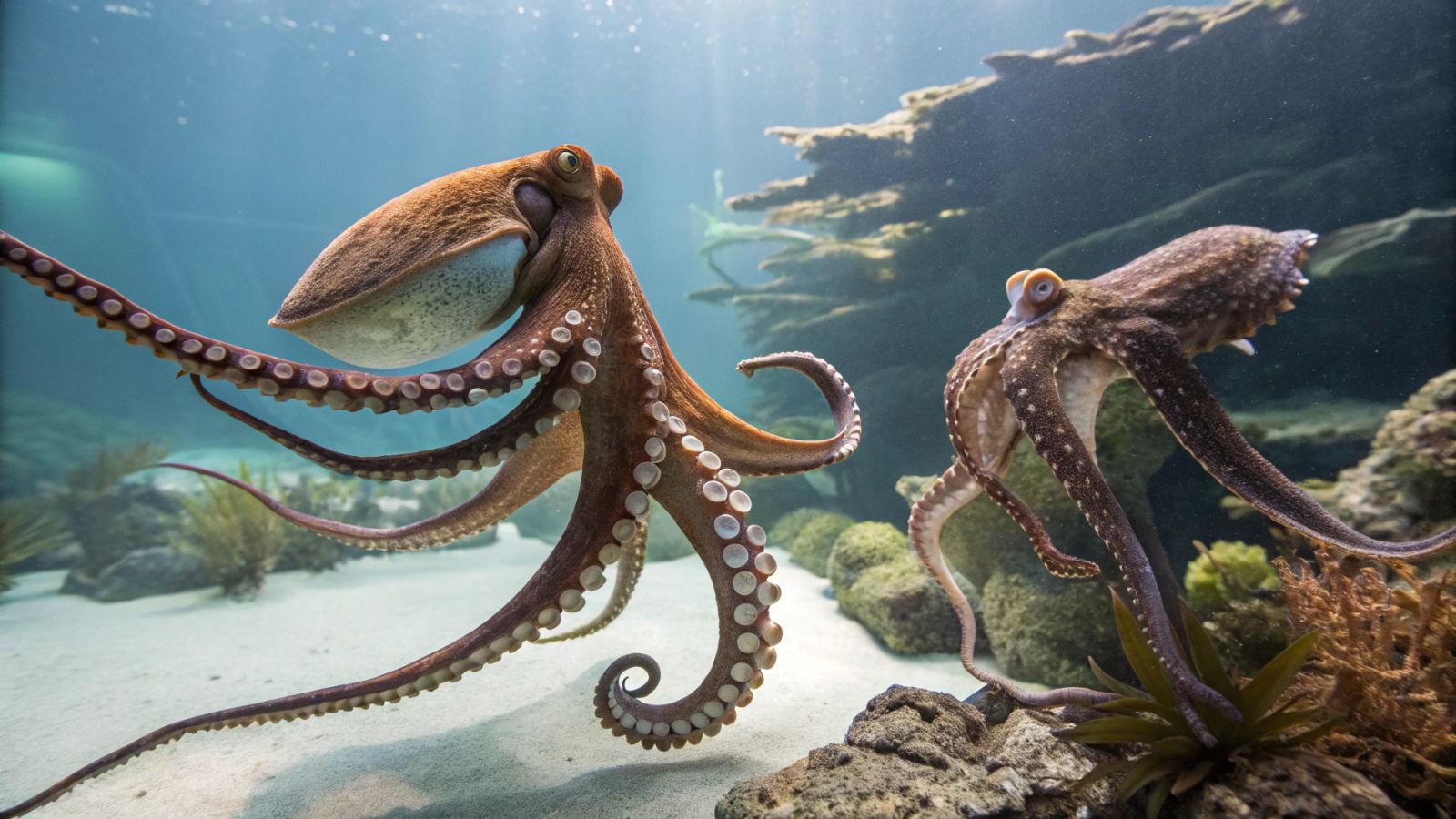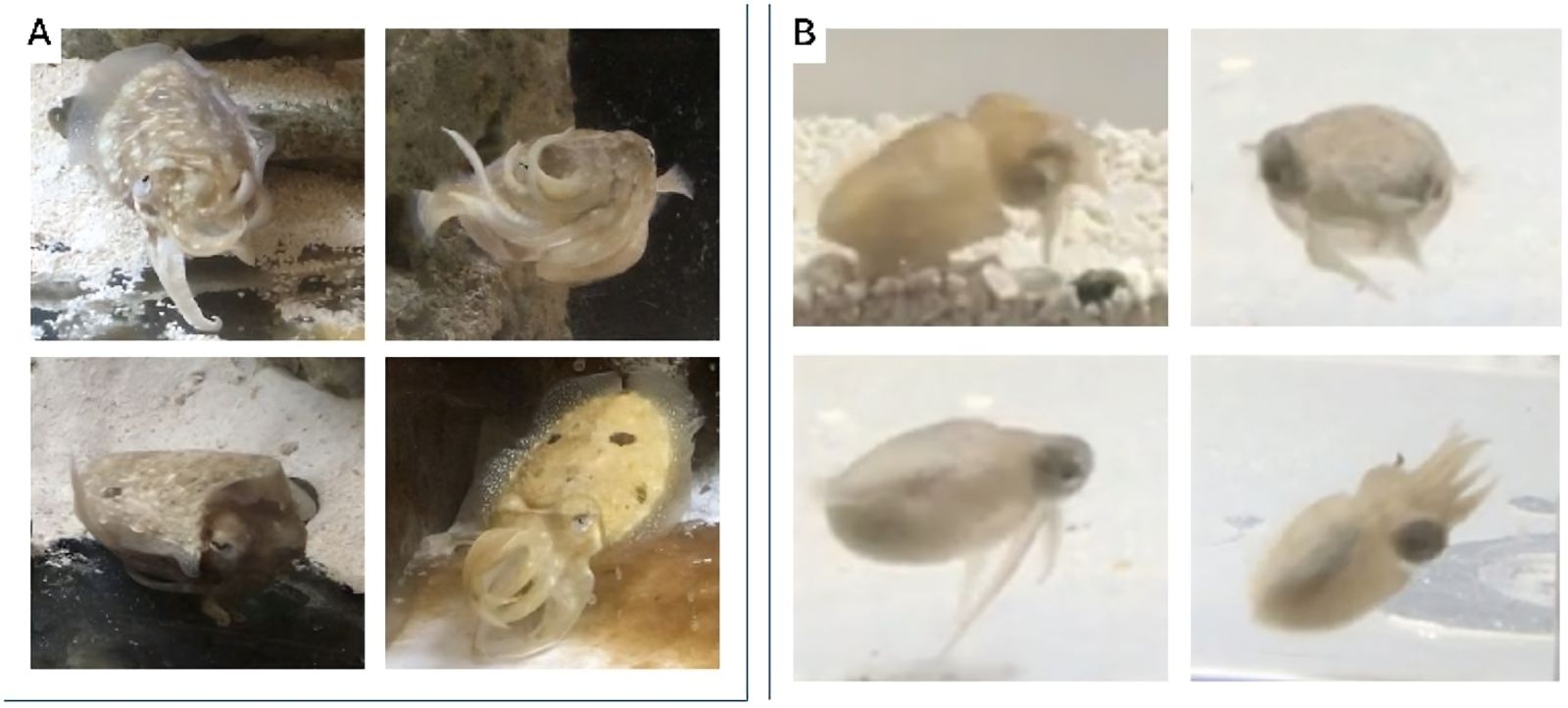Follow us on Google News (click on ☆)

Cuttlefish, known for their camouflage abilities and advanced behavior, appear to develop a still poorly understood gestural language. Researchers observed interactions between cuttlefish in aquariums, identifying four distinct signals performed with their tentacles, suggesting sophisticated communication combining postures and aquatic vibrations. To scientifically test these behaviors, they filmed these gestures and then played them back to other individuals, creating controlled experimental conditions.
Structured visual signals
The team observed two species, Sepia officinalis and Sepia bandensis, repeating specific tentacle movements. Four "signs" were distinguished: "up" (two tentacles extended upward), "side" (the animal pulls all its tentacles to one side of its body), "roll" (the cuttlefish folds all its tentacles under its head), and "crown" (resembling a person joining their fingertips), each associated with precise undulations.
To verify whether this was indeed communication, scientists showed videos of these gestures to other cuttlefish. They actively responded by reproducing similar movements, but not in simple imitation: they sometimes adapted their response.
Subsequently, researchers played the videos in reverse: the cuttlefish reacted less to these inverted images, confirming that they perceived and interpreted the normal orientation of the gestures.

A - Undulatory signs with four tentacles in adult Sepia officinalis:
A-1) "Up" sign: the first pairs of tentacles are raised upward, the second and third are twisted, and the fourth extended.
A-2) "Side" sign: all tentacles are curled to one side of the body.
A-3) "Roll" sign: all tentacles are curled under the head, making it appear larger and highlighting the eyes.
A-4) "Crown" sign: the tentacles form a crown during a "spit"-like movement.
The signs are observed in various contexts:
– sitting (A-1, A-3, A-4),
– swimming (A-2),
– frontal orientation (A-1, A-2, A-4),
– with laterality (A-3),
and accompanied by contrasting skin patterns (e.g., black spots, bright orange) as well as fin contractions.
B - Variants of the "up," "side," "roll," and "crown" signs in juvenile Sepia bandensis.
An unexpected vibrational dimension
Initial observations showed that cuttlefish continued these movements even when separated by visual obstacles. This intriguing phenomenon suggested the existence of another mode of communication. Researchers then realized that the animal's movements generate waves in the water, detectable by their peers without requiring visual contact.
They then recorded the vibrations produced by these gestures using a hydrophone. In the lab, they played these recordings to visually isolated cuttlefish.
The animals responded specifically to natural vibrations, not to modified versions. This confirms that they perceive and interpret these mechanical signals, likely complementing visual communication.
This multimodality (visual and vibrational) resembles advanced communication systems, such as those of cetaceans. Cuttlefish may thus adapt their messages depending on environmental or social context.
Scientists now plan to use machine learning to more precisely decipher these gestural exchanges. This approach proves essential for analyzing the thousands of subtle variations in movements and their usage contexts, a task impossible to perform manually with precision. Algorithms will be able to identify recurring patterns, establish correlations between signals and situations, and perhaps reveal a true underwater "syntax" unique to these cephalopods.